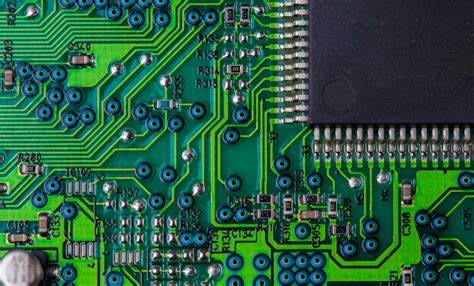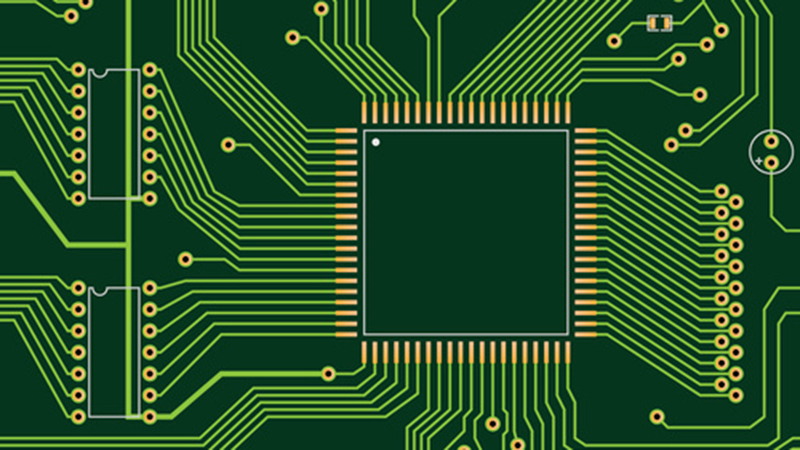
Light-emitting diodes and their basic circuits
(1) Basic knowledge of semiconductors
1. A semiconductor is a substance whose conductivity is between that of a conductor and an insulator. Its conductivity is related to temperature,light or doping concentrati on.
(2) Intrinsic semiconductors are chemically completely pure and structurally complete semiconductors.
Free electrons and holes are mobile particles that carry negative and positive charges respectively, called carriers.
But it should be noted that the movement of holes, such carriers, is virtualized by people based on the movement of vacancies in covalent bonds, and it is actually the movement of valence electrons in covalent bonds.
3. Actual semiconductor devices are not made of intrinsic semiconductors, but of impurity semiconductors. There are two types of impurity semiconductors: N-type semiconductors and P-type semiconductors.
N-type semiconductors: N-type semiconductors are formed by doping pentavalent element impurities in intrinsic semiconductors, and the majority carriers are electrons, and the minority carriers are holes.
P-type semiconductor: P-type semiconductor is formed by doping trivalent element impurities in the intrinsic semiconductor, and its majority carriers are holes and minority carriers are electrons.
A small amount of doping can form a large number of majority carriers, which are the main conductive particles of impurity semiconductors, and the conductivity of impurity semiconductors is much higher than that of intrinsic semiconductors.
4. The majority carriers in impurity semiconductors are mainly formed by doping, and the minority carriers are formed by thermal excitation. Temperature changes directly affect the concentration of minority carriers, so temperature is an important factor affecting semiconductor performance.
(2) Formation and characteristics of PN junction
1. The movement of carriers due to the action of an electric field is called drift, and the movement of carriers from a high-concentration area to a low-concentration area due to a concentration difference is called diffusion.
2. Pentavalent impurity atoms are doped on one side of a semiconductor to form an N-type region, and trivalent impurity atoms are doped on the other side to form a P-type region, and a PN junction will be formed at the interface between the two regions.
3. Applying forward voltage to the PN junction (high voltage in the P region and low potential in the N region) will weaken the internal electric field, which is conducive to the diffusion of the majority of carriers and forms a large forward current, which is called PN junction conduction;
The external reverse voltage (low potential in the P region and high potential in the N region) enhances the internal electric field, which is conducive to the drift of minority carriers and forms a small reverse current. At this time, the PN junction is considered to be cut off.
This is the unidirectional conductivity of the PN junction. Since the reverse current is formed by minority carriers, its size is affected by temperature.
6. The important characteristics of the PN junction also include the capacitive effect, and its equivalent capacitance is composed of two parts: the diffusion capacitance and the barrier capacitance. The capacitive effect of the PN junction is the root cause affecting the highest operating frequency of semiconductor devices.
(3) Diodes
1. The inside of the junction diode is a PN junction, so the characteristics of the PN junction are also the characteristics of the semiconductor diode. Unidirectional conductivity is the most common characteristic of diodes. However, in actual semiconductor devices, there are various types of diodes according to different manufacturing processes, which are used in various applications, such as low-power diodes, high-power diodes, and high-frequency diodes. In addition, there are some special-purpose diodes, such as Zener diodes (Zener diodes), varactor diodes, photodiodes, and light-emitting diodes.
2. The parameters of semiconductor diodes are the basis for their selection and cannot be ignored in practical applications. The maximum rectification current and reverse breakdown voltage are two important limit parameters of the diode. These limits cannot be exceeded when the diode is working. Only Zener diodes can work in the reverse breakdown state, and there is also a limit to the maximum operating current after breakdown.
(4) Basic circuit and analysis method of diode
1. The diode is a nonlinear device, and its circuit analysis generally adopts two methods: graphical analysis and simplified model analysis. For a circuit containing only one diode, it is relatively simple to use the graphical analysis method, but the premise is that the diode characteristic curve is known, and the simplified model analysis method is more usable and more convenient to use.
2. Four models of diodes are given in the main textbook, among which ideal model, constant voltage drop model and broken line model are large signal models reflecting forward characteristics and reverse cut-off characteristics, while small signal models reflect a certain Dynamic properties of the local working area. Among the three large-signal models, the ideal model is the simplest, but also has the largest forward characteristic error; the broken-line model is the most complex and has the highest accuracy. In practical engineering applications, the ideal model and the constant pressure drop model are most frequently used. Table 3.1.1 lists four models of diodes.

3. When analyzing a diode circuit using a large signal model, the key is to distinguish whether the diode is on or off. After determining the working state of the diode, the circuit can be equivalent to the corresponding linear circuit, and the analysis is easy. When the working state of the diode cannot be judged intuitively and simply, it can be assumed that the diode is cut off first, and then the potential level at both ends of the diode can be analyzed to check whether the assumption is true, so as to establish the working state of the diode.
4. The small signal model is based on a certain static operating point when the diode is conducting forward conduction, so its parameters are related to the static operating point. Room temperature,
=26mV/
,in
Is the quiescent (Q point) operating current when the diode is turned on. Use the small-signal model only when the diode voltage or current varies over a small range around the Q point.
2. Troubleshooting
1. How to understand holes and their movement in semiconductors?
Answer: A hole is not a real charged particle, it is a vacancy in a covalent bond, which represents the missing valence electron in the covalent bond, so it has a positive charge. Its movement in the semiconductor represents the movement of valence electrons, but the direction of movement is opposite to that of valence electrons.
2. How to understand the DC resistance and AC resistance of a diode?
Answer: The DC resistance of the diode
It refers to the terminal voltage V and the current flowing through it when it works at a certain point of the volt-ampere characteristic curve
Ratio. For example, in Figure 3.2.1, the DC resistance of the diode when it operates at Q point (quiescent operating point)
=
/
. Note that the
and
is the value for the origin of the coordinates. Obviously, the position of Q point is different, and the DC resistance value is also different.
The AC resistance of a diode refers to the amount of voltage change corresponding to the operating point moving within a small range of the characteristic curve under the excitation of changing voltage (or current)
and current variation
The ratio (as shown in Figure 3.2.1), also known as dynamic resistance, its value is equal to the reciprocal of the slope of the tangent line at the static operating point of the curve, that is
=
/
. Since the slope of the diode characteristic curve is different at different positions, the position of the static operating point is different, and the AC resistance is also different.
AC resistance is a dynamic resistance and cannot be measured with a multimeter. The forward and reverse resistance measured with the ohm block of the multimeter is the DC resistance of the diode.
3. Since the actual diode has a threshold voltage when it conducts forward, the diode cannot be turned on when the signal amplitude is too small, so how to realize the rectification of small signals?
3. Knowledge combing
1) mind map
2) Review thinking questions
3.2.1 Is the space charge region composed of electrons, holes, or donor ions and acceptor ions? Why is the space charge region also called depletion region or barrier region?
The space charge region is composed of donor ions and acceptor ions, because in this region, the majority of carriers have been recombined, or depleted. Therefore, the space charge region is sometimes called the depletion region.
3.2.2 Under what external conditions can the unidirectional conductivity of the PN junction appear?
When the forward voltage is applied to the PN junction, the resistance value is small, and the PN junction is turned on; when the reverse voltage is applied, the resistance value is large, and the PN junction is cut off.
3.3.3 In engineering practice, why are silicon diodes widely used?
Silicon diodes have a small reverse current and are resistant to high temperatures, while germanium tubes are the opposite, and a very low temperature will generate a large reverse current.
3.3.4 What is the main effect of the inter-electrode capacitance of a diode on its working characteristics?
The interelectrode capacitance is a parameter that reflects the capacitive effect of the PN junction in the diode. When the unidirectional conductivity of the diode works at high frequency or in the switching state, the capacitance between electrodes will be affected.
3.4.5 What is the difference between static working point and working point?
The static operating point refers to the intersection point of the load line and the volt-ampere characteristic curve when an AC signal source is connected to the circuit so that the AC signal source is zero; the operating point refers to the intersection point when the signal source is not connected.
3.5.1 For the parallel voltage regulator circuit, what is the selection principle of the current limiting circuit?
When selecting the current-limiting resistor R, it must be ensured that the Zener tube works in a reverse breakdown state. R too large may make
If R is too small, it is impossible to cause reverse breakdown of the Zener tube; if R is too small, it may cause
If it is too large, it will burn out the regulator tube. Therefore, in the case of ensuring the reliable breakdown of the Zener tube, choose a larger R value as much as possible.
3.5.2 What is the difference between a Schottky diode and an ordinary diode? Where is it mainly used?
The difference is: the withstand voltage of ordinary silicon diodes can be made higher, but its recovery speed is low, and it can only be used for low-frequency rectification. The tube is seriously burned due to heat; the withstand voltage of the Schottky diode is often low, but its recovery speed is fast, and it can be used in high-frequency occasions, so the switching power supply uses this kind of diode for rectification output. The temperature of the rectifier tube is still very high.






